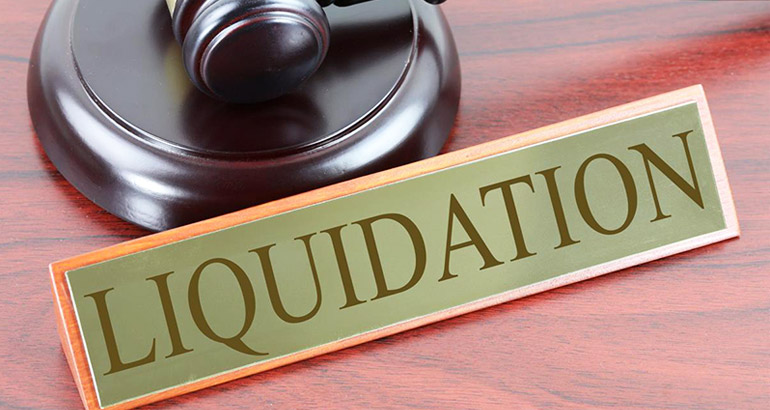Indicators on Company Liquidation You Should Know
Indicators on Company Liquidation You Should Know
Blog Article
Indicators on Company Liquidation You Should Know
Table of ContentsCompany Liquidation - TruthsNot known Details About Company Liquidation About Company LiquidationHow Company Liquidation can Save You Time, Stress, and Money.Rumored Buzz on Company Liquidation
A liquidator is especially assigned to supervise the ending up of a business's affairs in order for it to be folded commonly when the firm is declaring bankruptcy. The liquidator is an unbiased 3rd party who looks after the sale of company assets in order to settle any arrearages.Their duty consists of, however is not restricted to: Unbiased Movie director: A liquidator is tasked with acting as an objective 3rd party to supervise the whole company liquidation process. Create Declaration of Affairs: Liquidators have to produce an extensive statement of events record. This document is distributed to lenders, outlining the present monetary condition of the company at the time of its liquidation.
After the liquidation of a firm, its presence is eliminated from Business Home and it ceases to be a legal entity. If supervisors browsed the procedure without problem, there would be no fines or personal responsibility for firm debts expected. Currently, with a clean slate, directors can check out new service chances, though specialist consultation is suggested.
What Does Company Liquidation Do?
If even more than 90% of all company shareholders concur, liquidation can take area on short notice within seven days, the minimum legal notice for creditors. Nonetheless, generally, the bigger the liquidation and the more assets and capital business has, the longer the procedure will certainly take. 'Do I need to pay to liquidate my firm?', the solution will depend upon whether or not your business has any type of assets leftover when selling off.

We comprehend that no 2 companies are the very same, which is why we will make the effort to get to understand your service so we can recommend the most effective strategy for you. We only operate in your benefits, so you can be totally confident in the solution we provide.
The Facts About Company Liquidation Uncovered
In the UK, there is Get More Information a set procedure to folding or reorganizing a minimal business, whether it is solvent or financially troubled. This process is called liquidation and can only be dealt with by a licensed bankruptcy specialist (IP) according to the Insolvency Act 1986. There are 4 primary types of company liquidation process: Creditors' Volunteer Liquidation (CVL); next Obligatory liquidation; Management; and Members' Volunteer Liquidation (MVL).
:max_bytes(150000):strip_icc()/Liquidation-4193561-Final-699e67d885c243c39cac2985b16d51cb.jpg)
In these conditions, it is essential that the business ceases trading; if the service remains to trade, the directors can be held directly accountable and it can lead to the insolvency expert reporting wrongful trading, referred to as misfeasance, which may lead to lawsuit. The directors assign a bankruptcy expert and once this has actually been concurred and verified, there is a meeting with the shareholders.
Certainly, if there are no investors, this step of the procedure is not required (Company Liquidation). The IP takes control of the firm and begins the firm liquidation procedure. The supervisors are no longer associated with what occurs, including the sale of the firm's possessions. If the directors want any of the properties, they can alert the IP.
Little Known Questions About Company Liquidation.
The primary difference is that the firm's lenders applied to the court for an ending up order which forces the bankrupt business right into a liquidation procedure. For the most part, financial institutions take this action as a last hope because they haven't gotten settlement through other kinds of settlement. The court selects an insolvency professional, likewise known as a main receiver, to perform the mandatory firm liquidation procedure.
This type of business liquidation is not volunteer and directors' conduct is reported to the UK's Assistant you could try this out of State once the liquidation procedure has actually been finished. Therefore, any supervisor that fails to cooperate with the IP or has been associated with supervisor misconduct, or an illegal act, may cause major consequences (Company Liquidation).
It is made use of as a way to safeguard the firm from any lawful action by its financial institutions. The supervisors of the firm agree to make normal repayments to settle their debts over a duration of time.
The Greatest Guide To Company Liquidation
This gives the firm with time to create a strategy moving forward to rescue the business and stay clear of liquidation. At this point, supervisors hand control of the firm over to the designated administrator. If a business is solvent but the supervisors and investors intend to close business, a Members Voluntary Liquidation is the right alternative.
The firm liquidation procedure is taken care of by a liquidator designated by the directors and shareholders of the company and they have to authorize a statement that there are no creditors remaining. The liquidation process for an MVL is similar to that of a CVL because possessions are understood however the profits are dispersed to the directors and the shareholders of the business after the liquidator's costs have been paid.
Report this page